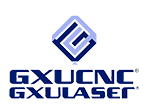In the world of modern manufacturing and processing, non-metal laser cutting machines have become a revolutionary technology, providing unparalleled precision and efficiency. These machines utilize high-powered lasers to cut a variety of non-metal materials, including plastics, wood, textiles, and composites. As the industry continues to grow, understanding the benefits of non-metal laser cutting machines is essential for companies looking to increase their production capabilities.
One of the main benefits of non-metal laser cutting machines is their exceptional precision. The laser cutting process can cut intricate designs and complex shapes with amazing accuracy. This precision is particularly beneficial in industries such as fashion, automotive, and aerospace, where detailed parts are critical. The ability to achieve tight tolerances means that manufacturers can produce parts that fit seamlessly, reducing the need for additional finishing processes.
Another significant benefit is the versatility of non-metal laser cutting machines. These machines can handle a variety of materials, from thin fabrics to thick wood panels. This adaptability makes them suitable for a variety of applications, including signage, packaging, and custom product designs. Manufacturers can easily switch between materials without extensive reconfiguration, streamlining production processes and saving valuable time.
Speed is another key benefit of non-metal laser cutting machines. The laser cutting process is much faster than traditional cutting methods such as die cutting or mechanical cutting. The increase in speed means higher productivity, allowing companies to meet tight deadlines and respond quickly to market demands. In a highly competitive environment, the ability to quickly produce high-quality products can be a game changer for manufacturers.
In addition, non-metal laser cutting machines are known for their clean cutting capabilities. The laser beam vaporizes the material, minimizing the cut and reducing waste. This efficiency not only saves material, but also minimizes the need for secondary operations such as grinding or finishing. As a result, companies can save costs by reducing material consumption while promoting sustainable development.
The benefits of non-metal laser cutting machines are further enhanced by their automation capabilities. Many modern machines are equipped with advanced software that allows for easy design integration and automated cutting processes. This automation reduces the potential for human error and ensures consistent quality throughout the production process. Additionally, operators can remotely monitor and control the cutting process, increasing operational efficiency and flexibility.
Safety is another important consideration in the manufacturing industry, and non-metal laser cutting machines offer a safer alternative to traditional cutting methods. The enclosed design of laser cutting machines minimizes the risk of accidents, while the absence of a physical blade reduces the possibility of injury. In addition, many machines are equipped with safety features such as automatic shut-off systems to ensure that operators have a safe working environment.
Finally, the long-term cost-effectiveness of non-metal laser cutting machines cannot be ignored. Although the initial investment may be higher than traditional cutting equipment, the savings in material waste, labor costs, and production time can provide a significant return on investment. In addition, the durability and low maintenance requirements of laser cutting machines also contribute to their overall cost-effectiveness.
In summary, non-metal laser cutting machines offer numerous advantages that make them a valuable asset to the modern manufacturing industry. From precision and versatility to speed and safety, these machines are changing the way companies produce. As the industry continues to embrace technological advancements, investing in non-metal laser cutting machines can provide a competitive advantage and drive innovation in product design and manufacturing processes.
Post time: Jan-15-2025



